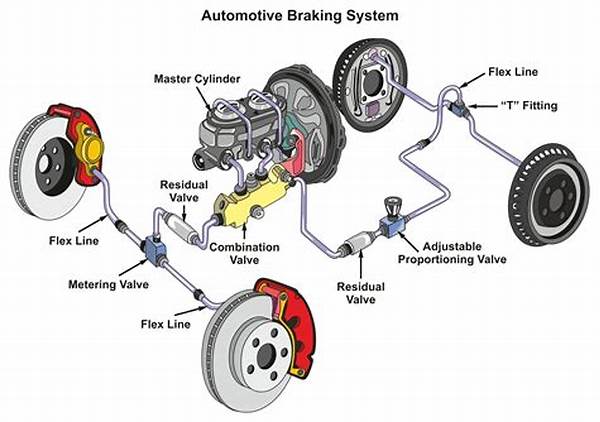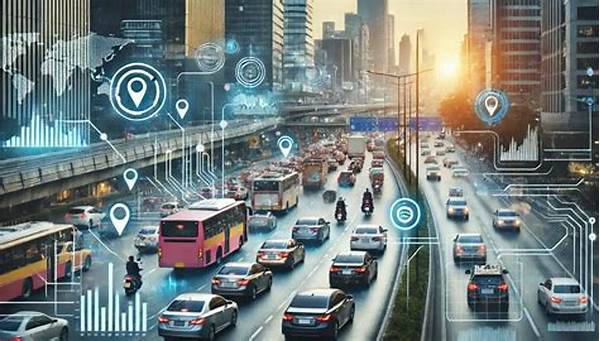Machine Learning For Traffic Analysis
The Role of Machine Learning in Traffic Analysis
In the realm of urban development, machine learning for traffic analysis is rapidly emerging as a revolutionary tool. Traffic management, a significant challenge in metropolitan areas, often requires innovative approaches to optimize flow and alleviate congestion. Machine learning models can analyze vast datasets to identify patterns, predict future congestion points, and suggest actionable solutions.
Read Now : Increase Miles Per Gallon Kia Sorento
With traffic data gathered from cameras, sensors, and GPS devices, complex algorithms can assess real-time situations. These models excel in processing enormous quantities of data, revealing insights that would be infeasible for human analysts. By implementing machine learning for traffic analysis, urban planners can foresee potential pitfalls and design more resilient infrastructures. This proactive approach aids in reducing accidents, improving commutes, and minimizing environmental impacts by optimizing vehicle movements.
Moreover, machine learning for traffic analysis is not an isolated solution but integrates seamlessly with smart city initiatives. It complements other technologies, such as IoT devices and smart grids, creating a comprehensive system that enhances urban living. As cities grow, the demand for efficient traffic systems becomes even more crucial. Thus, the application of machine learning in traffic analysis is an essential step towards sustainable urban management, promising a future where technology and infrastructure work hand-in-hand.
Practical Applications of Machine Learning in Traffic Analysis
1. Real-Time Monitoring: Imagine machine learning for traffic analysis acting like a crystal ball, predicting traffic jams before they happen—boom, less stress on the roads!
2. Accident Prediction: It’s like having a sixth sense; machine learning for traffic analysis sniffs out spots where accidents might sneak up, helping prevent chaos.
3. Traffic Signal Optimization: Ever wish your commute was all green lights? Machine learning makes it happen by optimizing those signals like a boss!
4. Public Transport Planning: By analyzing data like a nerdy detective, machine learning for traffic analysis helps plan better routes, making public transport uber efficient!
5. Pollution Reduction: Breathing’s gonna get easier! Machine learning helps cut down pollution by making traffic flow smoother than a jazz sax solo.
Advanced Techniques in Machine Learning for Traffic Analysis
Alright, real talk about machine learning for traffic analysis, it’s like the game-changer the cities didn’t know they needed. Imagine the city as this giant playground, and machine learning is the friend who knows all the shortcuts. It’s like Sorcery 101 for numbers, crunching data faster than you can say “road rage.” These tech-wizards use something called algorithms to predict where and when traffic might get sticky, kinda like forecasting a storm but for cars.
Urban planners are vibing with this tech because it’s so on-point. It’s like a GPS on steroids, adjusting to each twist and turn, ensuring drivers aren’t caught in a snail race. Plus, it’s not just about dodging traffic—machine learning for traffic analysis plays nice with smart city tech, making public transportation as slick as ever. And guess what? This means less fuel wasted, happier commuters, and a cleaner planet! So next time you’re cruising through town without a hitch, you might have some machine learning magic to thank.
Key Benefits of Machine Learning for Traffic Analysis
1. Speed Demon: Machine learning gets you where you need to go faster than ever.
2. Accident Avert-er: Keeps your drive drama-free by predicting and preventing crashes.
3. Green Light Guru: Helps you dodge red lights, making drives smoother than butter.
4. Eco-Champion: Reducing emissions like it’s nobody’s business.
Read Now : Subaru Outback Luggage Space Comparison
5. Data Detective: It uses data to unlock secrets of traffic flow and make roads cooler.
6. Traveler’s Ally: Makes public transport routes a dream ride.
7. Congestion Killer: Eases bottlenecks with style.
8. Urban Guru: Guides planners to build cities of the future, today.
9. Heartbeat of the City: Keeps things moving and grooving for urban dwellers.
10. Smart City Sidekick: Partners with other tech to create a seamless living experience.
Understanding Machine Learning for Traffic Analysis in Depth
Machine learning for traffic analysis isn’t just tech talk; it’s a whole vibe transforming our city streets into a smarter, cooler place to be. Imagine rolling through town, and everything’s just flowing—no jams, no honks, just pure harmony. It’s like someone whispered in the city’s ear, “Chill, we got this.” And that whisper? It’s all thanks to machine learning.
Using its data ninja skills, machine learning for traffic analysis takes raw data from sensors, cameras, and other gear, mixes it all together, and bam!—out pops a plan to make the traffic beast behave. This doesn’t just make the roads a better place for drivers but also for cyclists, pedestrians, and anyone trying to navigate the urban jungle. What’s even sweeter is how it plays into the bigger picture—like piecing together a puzzle, it connects with other smart technologies for a city that’s basically one giant brain.
But here’s the kicker: with machine learning for traffic analysis, we’re also talking about saving the planet. Less gridlock means less exhaust and fresher air for everyone. Plus, with signals smarter than a fox, public transport can swoosh people around town with ease. It’s where high-tech meets eco-friendly, all while giving commuters back their peace of mind. So next time you’re in the car enjoying a smooth cruise, tip your hat to the unsung hero—machine learning’s got your back.
Future Possibilities with Machine Learning for Traffic Analysis
Machine learning for traffic analysis holds the potential to evolve cities into intelligent ecosystems. It’s all about making smart decisions even smarter, from predicting traffic anomalies to suggesting alternate routes. As cities embrace the technology, they will witness reduced congestion-related stress, cleaner air, and enhanced urban experiences. The continuous development in this field promises a future where traffic woes become a narrative of the past.
Wrapping Up: The Transformative Power of Machine Learning for Traffic Analysis
In sum, machine learning for traffic analysis is an indispensable tool revolutionizing the way cities function. Its smart integration with urban infrastructure paves the way for a seamless commuting experience. By harnessing data and adapting to urban dynamics, it offers solutions that are efficient, eco-friendly, and future-ready. As the backbone of modern traffic management, machine learning ensures our cities flow with the grace and efficiency everyone dreams of.



